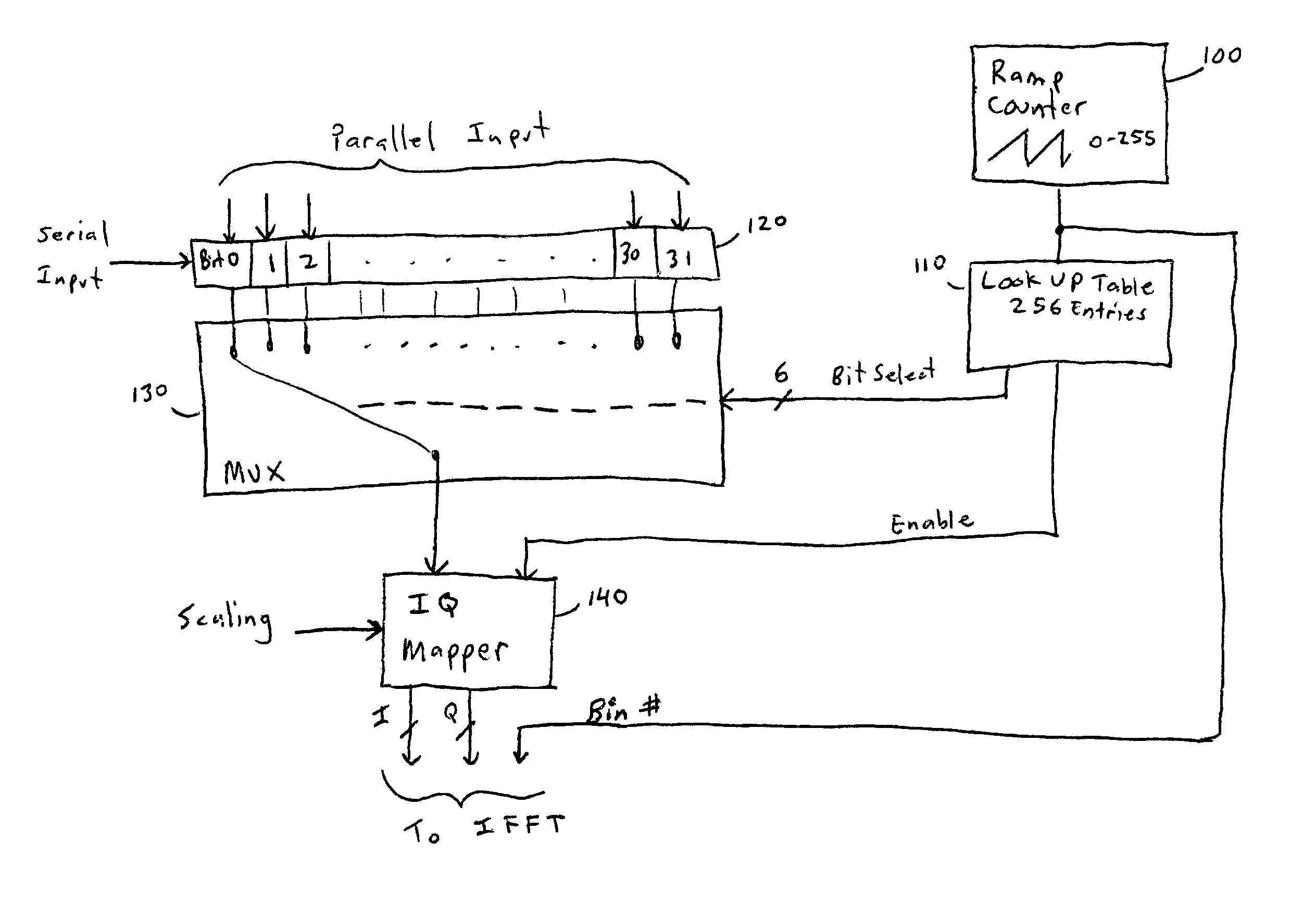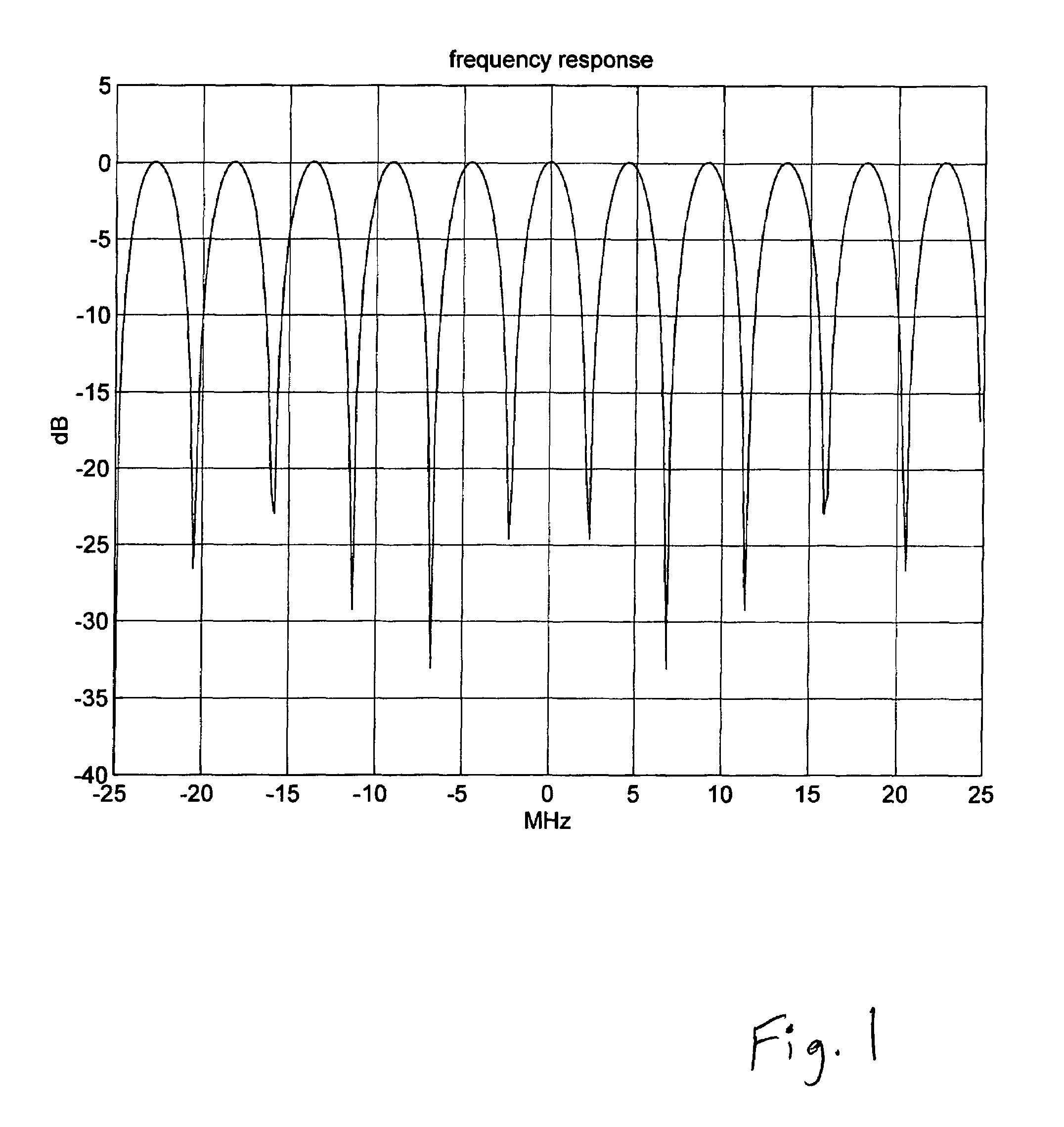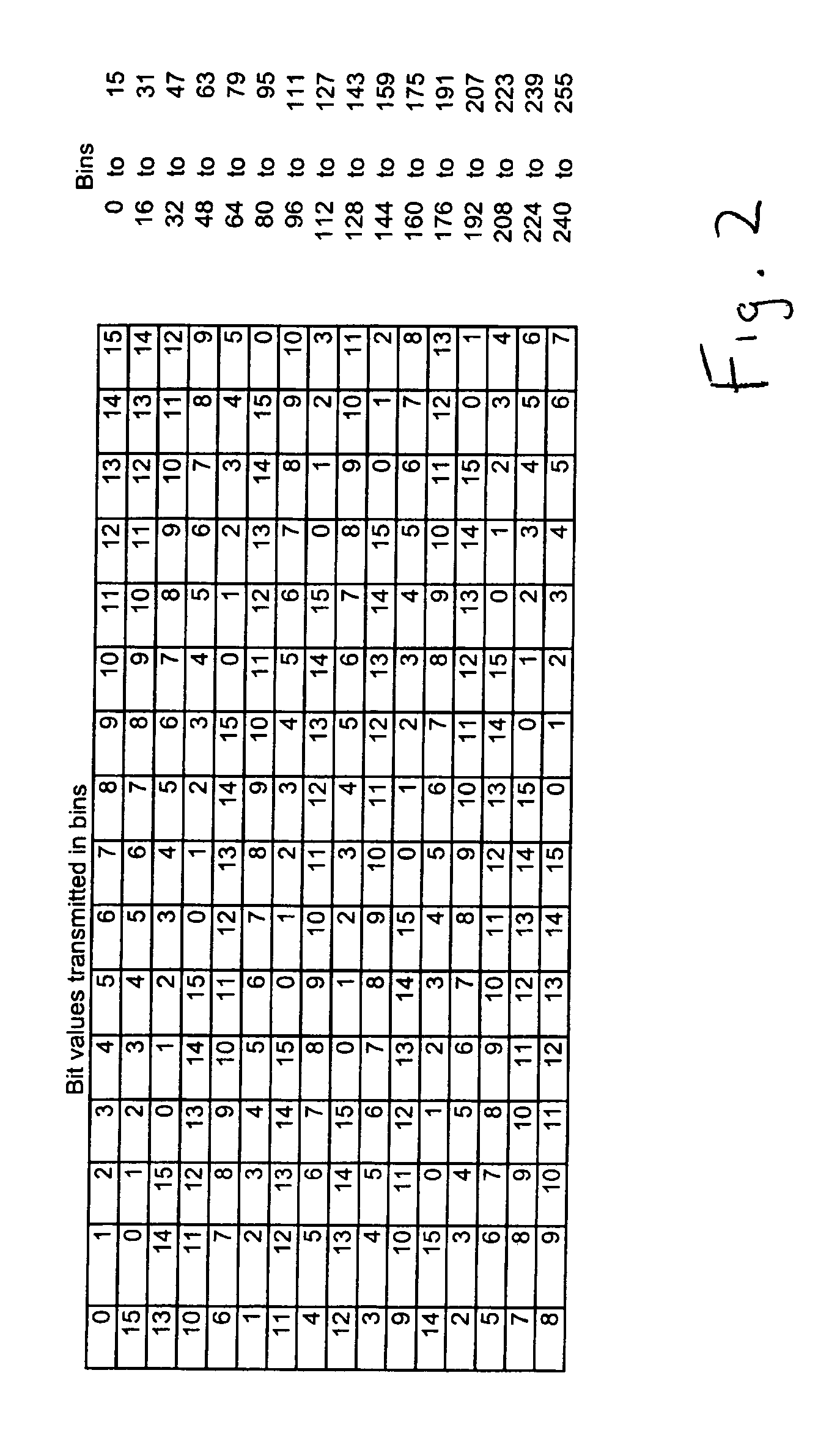Method of bit allocation in a multicarrier symbol to achieve non-periodic frequency diversity
a multi-carrier symbol and bit allocation technology, applied in the direction of orthogonal multiplex, multiplex communication, error prevention/detection by transmission repeat, etc., can solve the problems of reducing affecting the frequency diversity of the multi-carrier symbol, and affecting the signal quality
- Summary
- Abstract
- Description
- Claims
- Application Information
AI Technical Summary
Benefits of technology
Problems solved by technology
Method used
Image
Examples
Embodiment Construction
[0028]In an exemplary embodiment, 256 carrier tones are used for each multicarrier symbol. Each tone is modulated with BPSK to utilize the most robust modulation with the least amount of power. QPSK or higher modulation orders could be use. Data is repeated a predetermined number of times in several carriers across the frequency band. Preferred repetition factors are 8 to 16.
[0029]A message length, for example, of 156 bits with a repetition factor 8 would use 5 OFDM symbols. A message of 156 bits with a repetition factor of 16 would use 10 OFDM symbols. Message preamble bits are used in addition to user data bits to establish automatic gain control (AGC) levels and to estimate carrier offset and symbol timing.
[0030]The repetition pattern distributes the redundant data across carriers in a pseudorandom pattern that insures non-periodicity in the location of carriers modulated by the same data bit.
[0031]For example, in an OFDM symbol with 256 carriers and 16-way diversity, the optimal...
PUM
 Login to View More
Login to View More Abstract
Description
Claims
Application Information
 Login to View More
Login to View More - R&D
- Intellectual Property
- Life Sciences
- Materials
- Tech Scout
- Unparalleled Data Quality
- Higher Quality Content
- 60% Fewer Hallucinations
Browse by: Latest US Patents, China's latest patents, Technical Efficacy Thesaurus, Application Domain, Technology Topic, Popular Technical Reports.
© 2025 PatSnap. All rights reserved.Legal|Privacy policy|Modern Slavery Act Transparency Statement|Sitemap|About US| Contact US: help@patsnap.com



